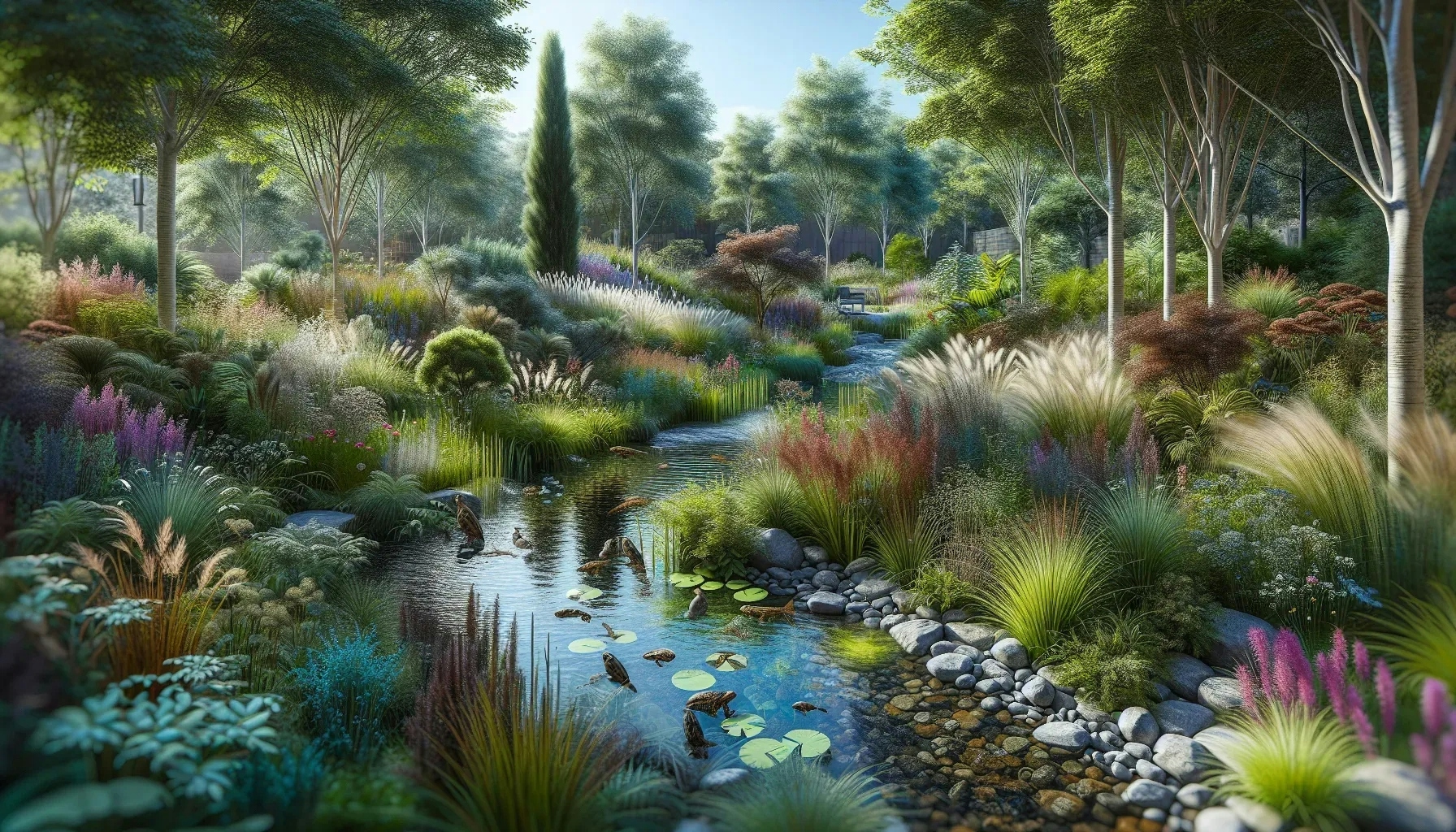How Can Landscape Architecture Projects Attract Local Wildlife?
Best of Home & Garden

How Can Landscape Architecture Projects Attract Local Wildlife?
Exploring the balance between landscape architecture and local ecosystems, we've gathered insights from a range of professionals, including a Marketing Manager of a leading arborist service. Alongside their experience, we've compiled additional answers that highlight successful strategies for inviting nature back into our urban and suburban spaces. Discover how these projects have fostered vibrant habitats for local wildlife.
- Create Green Pathways to Connect Habitats
- Design a Pollinator-Friendly Urban Oasis
- Offer Safe Refuge With Habitat Planting
- Develop Inclusive Parklands with Water Features
- Restore Native Plants in Nature Reserves
- Establish Bird Sanctuaries With Protective Foliage
- Plant Wildflower Meadows for Pollinators
Create Green Pathways to Connect Habitats
In one of our projects, we pulled off something pretty special that not only spruced up our towns but also gave our native wildlife a boost. We turned ordinary roadside verges and urban green spaces into lush native plant havens, calling them 'Green Pathways.' These weren't just random plants thrown together; we carefully picked native species that our local birds and insects love to feast and nest in.
We started by swapping out non-native plants for these locals, ensuring we had a mix that provided year-round food and shelter. Then, we added some tree hollows and bird baths to make the spots even more inviting. It wasn't long before we saw an uptick in bird visits and even some rarer insects making appearances.
What's cool is that these 'Green Pathways' didn't just attract wildlife; they connected fragmented habitats, giving our critters safe passage through urban areas.

Design a Pollinator-Friendly Urban Oasis
A spotlight project for me was the rejuvenation of a modest urban area into a bustling haven for bees and butterflies right here in Ottawa. My crew and I dove deep into research to cherry-pick plant species native to the region, aiming for those that beckoned pollinators while withstanding the local weather. We ambitiously designed a biodiverse sanctuary, sprinkling a mix of flowering plants to ensure a steady supply of nectar and pollen across seasons. Our efforts bore fruit, significantly boosting the bee and butterfly populations, enriching the local ecosystem, and sprucing up the communal space. Fusing my drive for eco-friendly initiatives with my adoration for the natural world, this project underscored the transformative impact of deliberate, green design solutions.

Offer Safe Refuge With Habitat Planting
A northern state department of wildlife purchased bamboo, native grasses, and other vegetation plants from our company. The goal was to encourage the growth of wildlife with habitat planting in West Tennessee. This included various plants for deer and turkey to feed on, native Carex species for small wildlife like reptiles, rabbits, and squirrels, and a range of nut, berry, and oak trees to attract wildlife for foraging purposes. I have seen many videos online of flocks of turkeys, deer, and other wildlife. I think this is an awesome idea that other states should also implement. Typically, hunters plant these types of plants to attract wildlife for hunting purposes, but the state is offering the animals a safe refuge instead.

Develop Inclusive Parklands with Water Features
Inclusive parklands are designed to be welcoming to all forms of life, featuring water elements like ponds and streams that are inviting to local wildlife. By ensuring these water features mimic natural environments, they become a hotspot for birds, amphibians, and various insects. These habitats not only provide drinking water but also breeding grounds for many species.
Carefully chosen plants around the water bodies offer shelter and additional food sources. Visitors to such parklands can enjoy the bustling activity of wildlife, which adds to the serenity and natural appeal of the area.
Restore Native Plants in Nature Reserves
Creating nature reserves that focus on the restoration of native plants offers a sanctuary for local wildlife that depends on these indigenous species. As flora that is naturally suited to the regional climate and soil conditions flourishes, it beckons native species of insects, birds, and mammals which rely on these plants for nourishment and habitat. These reserves become a living archive of the region's natural heritage and biodiversity, providing essential ecosystems where threatened or endangered species can find refuge.
Educational efforts can often accompany these projects, enlightening the public about the importance of native flora and fauna. Engage with these natural spaces and learn about the significance of indigenous biodiversity.
Establish Bird Sanctuaries With Protective Foliage
Bird sanctuary landscapes feature an array of protective foliage like shrubs and trees, which serve as nesting sites and offer sanctuary from predators. The chosen vegetation not only serves the purpose of protecting the birds but also provides them with a continuous food supply through fruits, seeds, and insects. These sanctuaries can often serve as a vital stopover for migratory species and can play a key role in bird conservation efforts.
Distinct from other wildlife projects, bird sanctuaries can become centers for ornithological study and birdwatching, enabling people to peacefully coexist with and observe these avian inhabitants. Grab your binoculars and visit a bird sanctuary to witness these vibrant ecosystems in action.
Plant Wildflower Meadows for Pollinators
Wildflower meadows are specifically developed to boost pollinator diversity, creating a tapestry of color and life that supports bees, butterflies, and other pollinating insects. The dense blossoms provide ample nectar and pollen, essential to the diet of these creatures, and the varied structure of the landscape offers suitable habitats. Since pollinators play a critical role in the ecosystem by assisting in plant reproduction, their well-being is a key indicator of environmental health.
Unlike manicured gardens, wildflower meadows have a beauty that changes with the seasons and offers a dynamic and educational view of pollinator activity. Plant a patch of wildflowers in your own garden to help these essential creatures thrive.